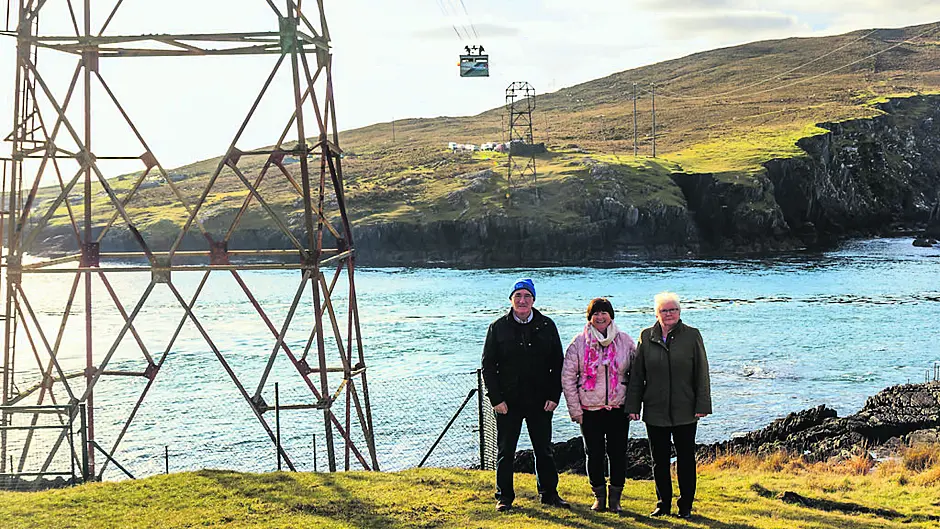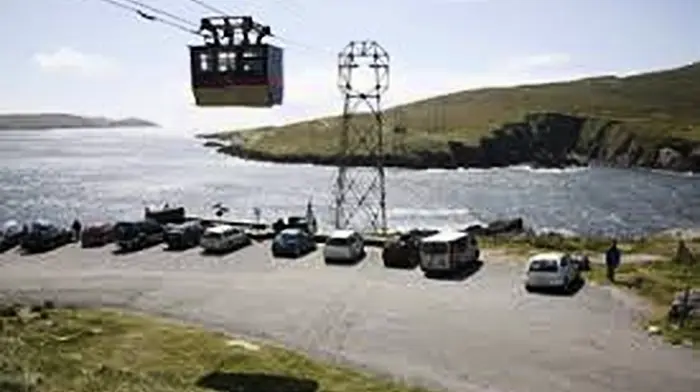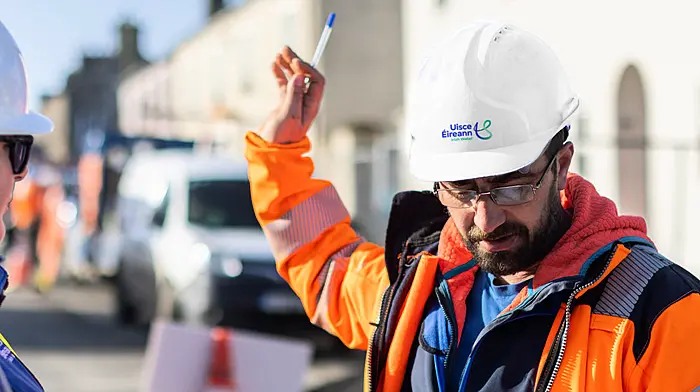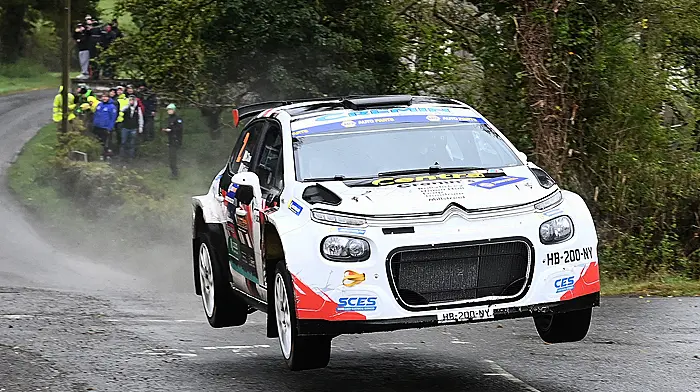THERE were great celebrations on Dursey Island to mark the 50th anniversary of Ireland’s only cable car, last Monday morning.
The cable car links the mainland with the inhabited Dursey Island and it has witnessed significant growth over the last number of years, increasing from 12,000 visitors in 2015 to 22,000 in 2018.
Officially opened on December 5th 1969 by then-Taoiseach Jack Lynch, and managed since by Cork County Council, the cable car can carry six passengers each way and was designed to allow islanders safer access to the island. The trip of 374m across Dursey Sound takes just over seven minutes.
Former operators, engineers, councillors and members of the local community spoke about the economic and social importance of the car, both for the island and for the area generally.
Cork County Council has now lodged plans with An Bord Pleanála for a new cable car with a decision expected in the spring.
The proposed development would have two independently operated cable cars, a visitor centre, café and improved car parking.
On the island, there would be a small building to receive the cable car, a sheltered waiting area and toilets.
Estimated at a cost of €10.5m, with funding from Fáilte Ireland, the Council hopes the project would be operational by early 2023.
Meanwhile, a leading environmental watchdog is objecting to the plans. Friends of the Irish Environment (FIE) used the anniverary occasion to highlight their objections, calling it ‘honeypot tourism at its worst.’
FIE’s Tony Lowes said the location would attract throngs of tourists who, due to their numbers, place such pressure on the environment that they end up undermining the quality and experience of what they came for in the first place’.
He added: ‘What is needed is tourists who go to the pubs and little restaurants and explore the streets of our towns and villages, fish our rivers and walk our mountains. That is the kind of tourism that brings prosperity to everyone – not lines of tourist buses going from one hotspot to another past the boarded-up shops of local towns.’








